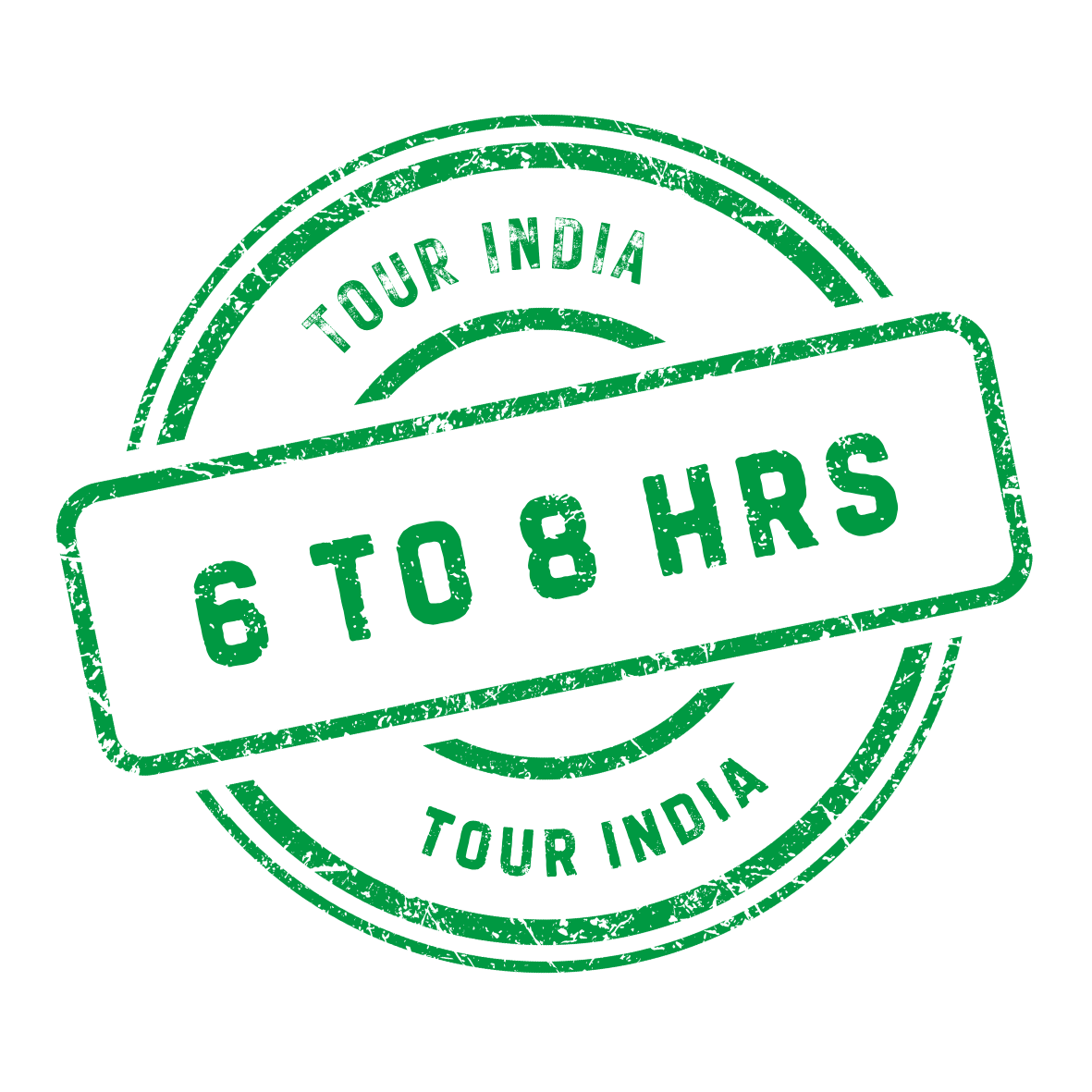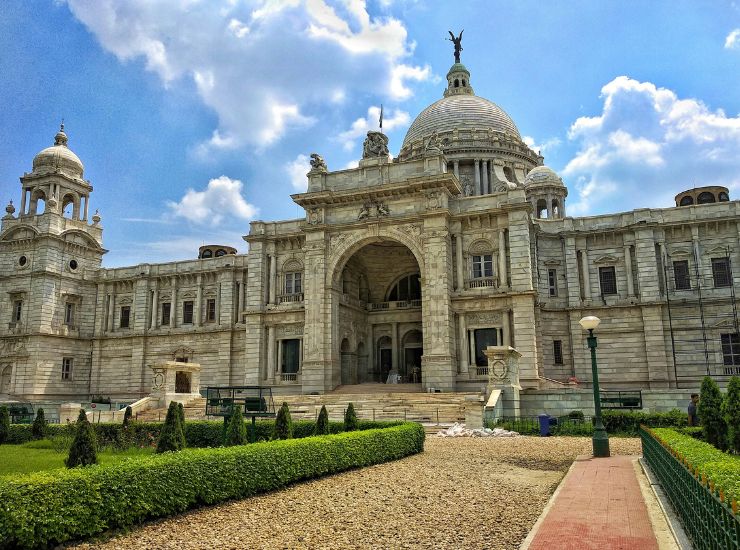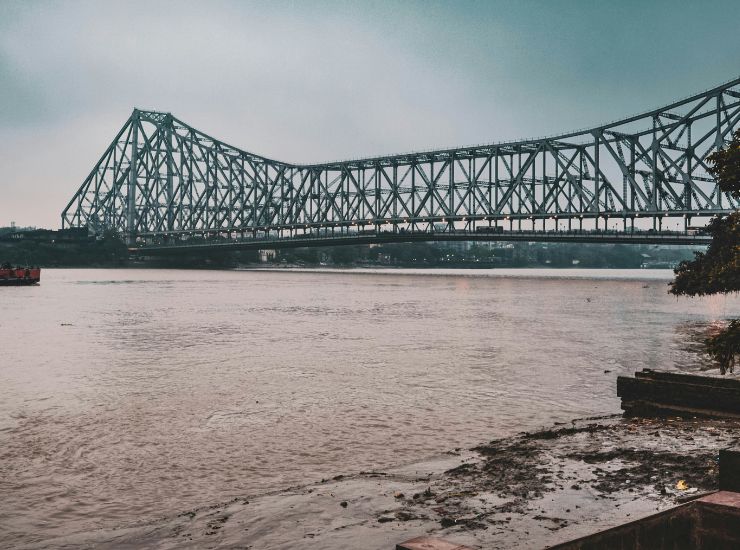Kolkata Day Tour
Kolkata Day Tour – Discover the City of Joy in One Day
Embark on a private full-day Kolkata Day Tour and uncover the city's rich cultural, spiritual, and colonial legacy. Visit iconic landmarks such as Victoria Memorial, Howrah Bridge, Dakshineswar Temple, and more. Perfect for first-time visitors and cultural enthusiasts looking to explore Kolkata’s history and charm in a single day.
Kolkata Fact File
- Area 185.39 sq. km
- Population 43,99,819
- Altitude 5.5 metres above sea level
- Languages Bengali, Hindi, and English
- Best time to visit October to March
- STD code 033

Flower Market - Howrah Bridhe - Writers House - Governor's House - Kumartolli, Jorasanko - Marble Palace - College Street - University - Museum - Kali Temple - Mother Teresa Missionaries of Charity - Birla Temple - Victoria Memorial - Jewish Synagogue
Our Tourist Permit Car / Coach with English / Multi Lingual License Guide will report at your Hotel or Residence at 0900 hrs. Start your sightseeing of Kolkatta. Morning Visit the flower market and the Howrah Bridge. Writers’ building and the Governor’s house. Visit to Kumartolli to see how typical Bengal Pottery are made, Then visit a Bengali sweet making Centre, Jorasanko (Rabindranath Tagore’s House), Marble Palace, College Street, Kolkatta University, Indian Museum. Later in the day visit – Kali Temple of Kalighat, Mother Teresa House, Birla Temple, Victoria Memorial & Jewish Synagogue.

Kolkata (formerly Calcutta) is a city that means many things to many people. For some, it is the city of joy, while for others it is dirty, crowded, and noisy. Once the greatest colonial city in the Orient, Kolkata was later reviled as a cauldron of poverty, dirt, and disease. Today, it ranks among the four major metropolis of India along with Delhi, Mumbai, and Chennai. A mere village in the 17th century, Kolkata is not an ancient city like Delhi. Like Mumbai and Chennai, it originated largely due to the expansionist ambitions of the European powers, especially the British Raj. Little wonder, Kolkata has some of the finest Raj edifices built in a variety of styles.
Kolkata was the first capital of the British in India. The city was established in 1686 when the British moved to the small villages of Sutanati, Govindpur, and Kalikata from their trading port of Hooghly. It progressed well until 1756 when Siraj-Ud-Daula (Nawab of Bengal) attacked the town and drove away the British. Lord Clive retook Kolkata and until 1911, it remained the capital of the British government in India. Being the centre of power for so long created a unique culture and heritage, totally unlike any other city in India.
Sightseeing
Kolkata is the proud intellectual capital of the country. The city has made outstanding contribution to the country in the field of arts, sciences, medicine, social reform and literature. The city retains some of the most striking colonial buildings of the country. It used to be the capital of the British East India Company and the evidence of the British colonization persists there in the city. The Victoria Memorial is a grand edifice constructed in the memory of Queen Victoria. This building houses a number of rare specimens of the historical preserves of the land. Howrah Bridge is another landmark that denotes the city of joy. This hanging bridge is an architectural marvel of the country. The second largest planetarium in Asia, the Birla Planetarium is another site that attracts attention of all regardless of their age. The recently built Vidyasagar Setu, another architectural marvel, connects both the banks of the Hooghly River. The Metro Railway, Indian Museum, Dalhousie Square, St. Paul/’s Cathedral, National Library, Shaheed Minar, Eden Garden, Fort William, Rat Park and Marble Palace are some of the other sites of the city that are worth visiting.
Excursions
Beyond Kolkata/’s immediate claustrophobia a few suburban towns of yore still exist, a little senile and lost in a myriad memories, chasing the past down the chiaroscuro of history, and then, breathless, watching the eternal dance of life reflected at dusk on the waters of the Hooghly. Their lanes and bylanes, now crowded with cycle-rickshaws and men and meanness, once witnessed the best of times and the worst of times. And they passed through the age of foolishness and the age of wisdom.
Today, in spite of the crowds, you/’ll hear little-known stories about the glorious Fort Gustavus in Chinsura or the miracle of Nossa Senhora di Rozario in Bandel. Head for these sleepy towns and villages in the outskirts of Kolkata, and you are sure to have a wonderful time amidst nature, far away from the din and bustle of the city. Also take some time off to visit Tagore/’s university township of Shanti Niketan and the temples at Belur and Dakshineshwar.
Victoria Memorial
Victoria Memorial is a huge white-marble structure and the most enduring of remains of the British Raj in India. Built by Lord Curzon in memory of the popular monarch, Queen Victoria, it is a wonderful example of the Western style of architecture. The structure, which is now floodlit in the night, gives a fascinating site. It has been now converted in a museum that houses the most impressive collection of memorabilia from the days of Raj. The manuscripts, paintings and sculptures here are outstanding.

Indian Museum
Indian Museum, built in 1874, has a beautiful structure. The oldest museum in India, it houses a rare collection of artefacts. The entrance to the museum has an original Lion Capitol, the national symbol of India. The museum is open all days of the week except Monday, from 10 a.m. to 5 p.m.
Fort William
Fort William was constructed in 1781 after the unfortunate happenings of 1756 in which many British soldiers with their families were killed by Siraj-Ud-Daula. Large area around the village of Govindpur was cleared to construct this fort, which for some time also lent its name to the city. The fort is still in use and visitors are allowed inside only after getting special permits. The area around the fort is a very large patch of green known as the Maidan (ground). The Maidan is also known as the lung of Kolkata and stretches 1 km in width and 3 km in length.
Eden Garden
Eden Garden, located in the northwest corner of the city, is a small and pleasantly laid-out garden. Once the gathering place of the social elite of Kolkata, today it houses the renowned cricket ground by the same name.
Birla Planetarium
Built by the Birla Education Trust, this single-storeyed circular structure is one of the largest of its kind in the world. The central dome of the planetarium, with a diameter of 27 m, is an imitation of the Buddhist stupa at Sanchi. Regular shows are held here both in English and Hindi.
Howrah Bridge
Howrah Bridge is an excellent example of engineering techniques of the early 20th century. The whole bridge is 450 m long without any pylon in the river. The bridge also has the distinction of being the busiest bridge in the world catering to around 100,000 vehicles and innumerable pedestrians.

Dalhousie Square
Renamed Binoy Badal Dinesh Bagh (also BBD Bagh), Dalhousie Square is the hub of West Bengal/’s administration and commerce. This is the site of all the important government institutions of the state. This is the place that houses the now famous Writer/’s Building (clerks were known as writers in the British India) and the old Fort William.
St. Paul’s Cathedral
Consecrated in 1847, the St. Paul/’s Cathedral was the first cathedral church in India. It is an imposing structure built in the Indo-Gothic style. The cathedral is more than 60 metres high, nearly 80 metres long and 25 metres wide, with the distinction of displaying the first stained glass window in the city. It has many paintings depicting biblical scenes and a small library of antiquarian books.
Marble Palace
Built by Rajendra Mallik, the Marble Palace displays the art forms of Italy, the Netherlands, England, and other European nations. The interior of the palace—the floors, walls, and tabletops—are all made of marble. Formerly known as the Palace of Arts, it was named the Marble Palace by Lord Minto.
Excursions from Kolkata
Bandel Church
Bandel, 43 km from Kolkata, is an anglicized version of bandar, meaning ’wharf’ in Portuguese. Once an important port, it is known today for its church, the oldest outside Kolkata. However, the present church is a replacement of an earlier edifice that was razed to the ground when Shah Jahan, the Mughal emperor, sacked the Hooghly in 1632. The Portuguese, nevertheless, were soon allowed to return and the present Basilica was built in 1660 by Gomez de Soto, who had the keystone of the old church.
The new house of worship is dedicated to Our Lady of the Rosary, Nossa Senhora di Rozario. In the centre of the main façade is a beautiful statue of the Virgin (Our blessed Lady of Happy Voyage) and the Child. It is believed to have been originally on the altar of the old church destroyed by the Mughals. Legend relates that Father da Cruz and a pious Portuguese merchant used to pray before this image. After the fort was captured by the Mughals, the merchant, fearing sacrilege, took it from the altar, jumped into the Hooghly and swam across with it but was seen no more. One night, after the Portuguese returned to Bandel, a violent storm woke Father da Cruz. He heard his friend’s voice saying. ”Hail! Our Lady of Happy Voyage, who has given us victory! Arise, oh Father, and pray for us all!” On looking out of the window, he saw the river lit with a strange light and it seemed as if someone was coming towards the church. Early next morning, to the great surprise of Father da Cruz, he found the image of the Holy Virgin a few yards from the Basilica gate. He placed it on the altar immediately and a special festival was instituted to commemorate this miraculous event.
Years have gone by but the blessed Lady is still worshipped at the Bandel Church. On her benign face is reflected the faith and joy of men and women who live no more. The universal feelings, however, are carried forward. The beauty and peace of this Basilica is intoxicating. And the flame of the candles lit by hundreds of devotees flicker with hope even in these troubled times.
Belur Math
Belur Math, the headquarters of Ramakrishna Mission, is situated to the north of the city across the Vivekananda Bridge from Dakshineshwar. The world-famous temple was built by Shri Ramakrishna/’s beloved disciple Swami Vivekananda in 1938. The great mansion lies 3 km south along the west bank of the river Hooghly. It is a universal place of pilgrimage, visited by people belonging to diverse castes and creeds. The math is committed to social service, religious harmony, spiritual attainment and renunciation.
Bishnupur
Located 100 km northwest of Kolkata in Bankura district, Bishnupur has a glorious past that is reflected in its rich architecture, music and handicrafts such as pottery and weaving. It houses unique terracotta temples, each more beautifully embellished than the other. Once the capital of the Malla kings, Bishnupur is renowned for its crafts such as intricate Balucheri saris, the rare ganijifa (circular Indian playing card), delicate carving on shells and bell metal artefacts.
The brick temples at Bishnupur, built between the 17th and 18th centuries when terracotta had reached its zenith under the Malla kings, are located in the ruined fort area and its neighborhood. The oldest brick temple is a curiously shaped Rasmancha with an elongated pyramidal tower surrounded by hut-shaped turrets. It was built in the late 16th century by King Beera Hambira. The temple of Shyam Rai with its superior figurines and floral patterns was the first of its kind in Bengal. The temple of Madanmohana, the best known in Bishnupur, in the Sankharipara area was built outside the fort compound by King Durjana Singh Dev, son of Raghunath Singh, in AD 1694. It is built in the /”eka ratna/” style, a square flat-roofed building with curved cornices, surmounted by a pinnacle.
Apart from temples, Bishnupur has some very attractive bandhs or large tanks that offer good sightseeing. The Lalbandh, Krishnabandh, and Pokabandh were built by the Malla kings around 17th and 18th centuries. These were made to provide water to the villagers and to protect the town from enemy attack by draining out the water towards them.
Botanical Gardens
Founded in 1786 beside the Hooghly in Shibpur, the Botanical Gardens is a major attraction in the vicinity of Kolkata. Covering an area of 110 hectares, it was intended to promote the study of Indian trees and herbs. The main attraction of the garden is a 250-year-old banyan tree (Ficus bengalhensis) which rises to a height of 98 feet and measures over 1,300 feet in circumference.
Chinsura
Chinsura, barely 46 km from Kolkata, is the locale of a Dutch factory built in 1628. The Fort Gustavas, as it is known, has been described by Gautier Schouten in 1665 as the most magnificent edifice to be built in Hooghly. Along the river bank were homes with pretty gardens inhabited by the Dutch themselves and some Armenian families who built for themselves a beautiful church. However, with the outbreak of war in Holland in 1781, Chinsura was annexed by the British. The ships owned by the Dutch sailed away. The sound of guns softly died. What remains now is a vestige of the past, behind the cloud of memories. You can seek it in the ruins of Fort Gustavus, whose barracks have now been converted into the Court; in the façade of imposing mansions that tell their silent story; down the corridors of Mohsin College in Hooghly, where, maybe on a moonlit night, the light footsteps of Chinsura/’s famous beauty, Elizabeth Wranghem, can still be heard.
Dakshineshwar Temple
Dedicated to Goddess Kali, the Dakshineshwar Temple is situated to the north of Kolkata, a place where Ramakrishna Paramhansa, the spiritual guru of Swami Vivekananda, lived most of his life. The temple was built by Rani Rashmoni in 1847. The temple comprises of three parts. Of these, the smallest is dedicated to Lord Vishnu. The more beautiful shrine adjacent to it houses the renowned idol of the Goddess Kali. Structurally, the temple is set on a platform in a vast courtyard, which is encircled by a band of blood-red paint. The whitewashed main Kali temple is the ornamental variation of the typical Bengali hut design. The roof is curved and the second story is capped by nine chhatris, each with a beehive cupola, in the navaratan (/”nine-jeweled/”) style. Ramakrishna/’s former room serves as a reminiscence of his life and philosophy. Opposite to this building, along the riverbanks, are situated five identical temples.
Ramakrishna died in 1886 at the age of fifty. The temple of Kali, where many of his ecstatic trances occurred, continues to attract pilgrims from all over India and the world.
Shanti Niketan
Shanti Niketan, Tagore/’s university township, is a must on any itinerary that plots Bengal as a stopover. Situated 136 km northwest of Kolkata, this is the place where Rabindranath Tagore lived and established a university. The Poush Mela is celebrated in Shanti Niketan usually on the 22nd or 23rd of December. The three-day function marks the foundation of Shanti Niketan. From Shanti Niketan, you can also take a sojourn to Bakreswar, where ancient Kali and Shiva temples rise into the azure sky. The hot springs are famous for curing many chronic diseases.
Customize Your Kolkata Day Tour
This is a private individual tour and can be fully customized to suit your available days, travel preferences, and budget. Our experts are ready to help you create a bespoke tour just for you.
To get started, please contact us with the following details:
- Number of days for touring in India.
- Period of travel (Month of the year)
- Number of people travelling.
- Choice of destination in India (North, South, East, West)
- Choice of Hotels accommodation (Economy, Standard, First Class, Premium)
Send us an email on info@tour-india.net or submit the form with your queries, we will reply you with your tour within 24 hrs. *
East India
West India
North India
South India
Plan Your Journey Today
Ready to explore the wonders of India? Contact us to customize your tour package and embark on a journey of a lifetime.
